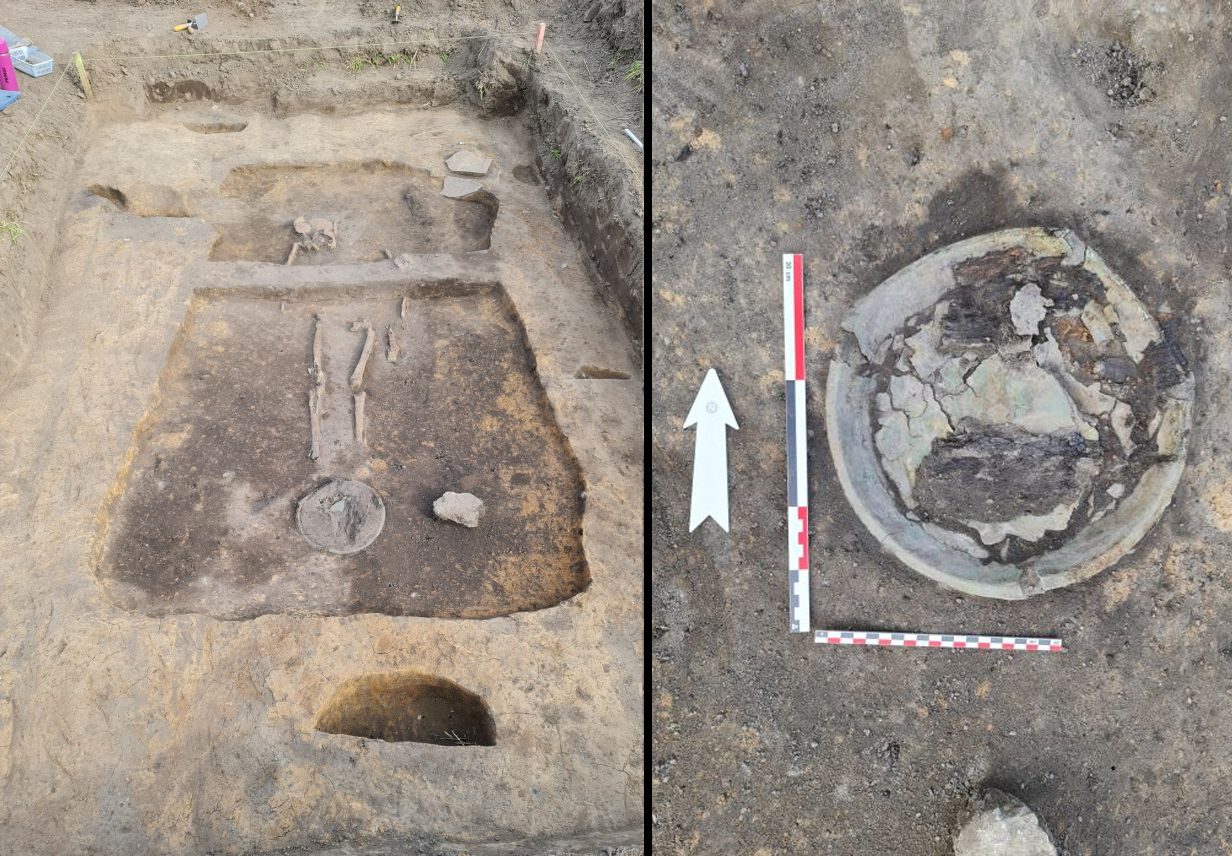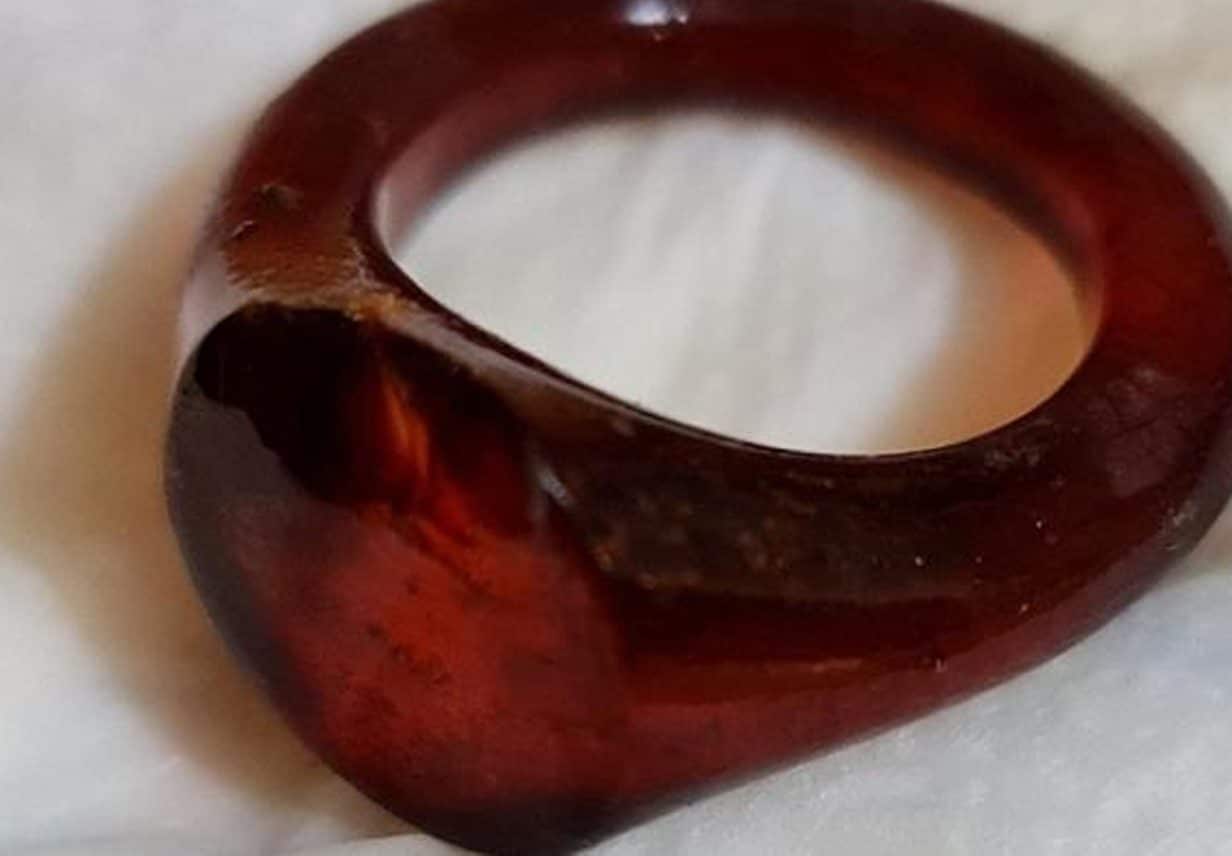Archaeologists have discovered a burial chamber in Ostrowite, in the Pomeranian Voivodeship of Poland that contains several high-status grave goods.
The study was conducted by the Institute of Archaeology of the University of Lodz, where researchers found several burials and fragments of bronze bowls during previous archaeological studies of the vicinity.
In the latest excavation, the team found the burial of a man from the 11th to 12th century AD, buried in a wooden structure that resembles a large chest or a small house.
The type of burial is consistent with chambered burials normally associated with high status individuals during the early medieval period, with the suggestion that he may have been a Christian based on the east-west axis of the body.

Within the burial, archaeologists uncovered two amber rings, a large bronze bowl and an iron knife in a leather sheath with bronze fittings.
The amber rings were symmetrically arranged in relation to the body axis, whilst between the legs of the deceased was a bronze bowl containing pieces of wood (most likely the remains of the ceiling from the wooden structure).
On the surface of the bowl and knife sheath, archaeologists identified fragments of fabrics or their imprints, whilst beneath the bowl was small fragments of leather that are most likely the remains the deceased’s footwear.
Dr. hab. Jerzy Sikora from the Institute of Archaeology of the University of Lodz commented: “The deceased was most likely a representative of the local Pomeranian elite. Ostrowite was an important but local centre of power that functioned from the 11th to the 14th centuries. It was a fairly extensive settlement complex with a settlement on a nearby island, which was connected to the shore by a wooden bridge.”
Header Image Credit : J. Sikora





